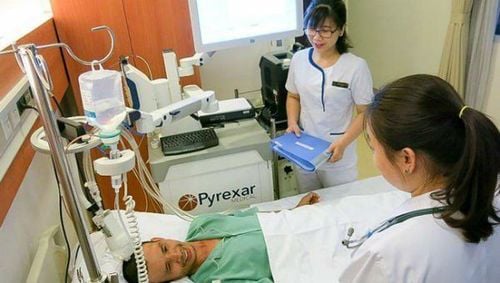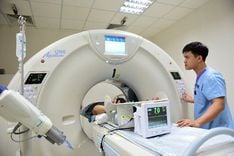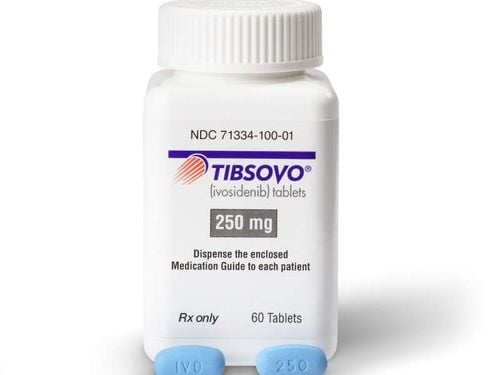This is an automatically translated article.
Neuroblastoma is an extremely dangerous disease and is common in children. The disease causes many complications such as metastasis, compression of the spine and paraneoplastic syndrome. When conducting neuroblastoma treatment, doctors will depend on age at the time of diagnosis, stage of disease, location of tumor, metastasis, and tumor activity, to choose Choose the right treatment.There are different types of treatment for patients with neuroblastoma. Children with neuroblastoma should have their treatment planned by a team of doctors who are experts in the treatment of childhood cancer.
Doctors involved in the treatment of children include: pediatric oncologist, pediatric surgeon, endocrinologist, neurologist, pediatric neurologist, specialist pediatric medical, psychologist,...
1. Neuroblastoma treatments
1.1 Monitoring Closely monitor the patient's condition without giving any treatment until signs or symptoms appear or change.1.2 Surgery Surgery is used to treat neuroblastoma, unless it has spread to other parts of the body. If the tumor cannot be removed, a biopsy may be done instead.
1.3 Radiation Therapy Radiation therapy is a cancer treatment that uses high-energy X-rays or other types of radiation to kill cancer cells, keeping them from growing. There are two types of radiation therapy:
External radiation therapy: Using a machine outside the body to send radiation towards the cancer; Internal radiation therapy: Using radioactive material sealed in needles, beads, wires, or catheters placed directly or near the tumor site. The way radiation therapy is given depends on the type of cancer being treated and the child's risk group. External radiation therapy is used to treat neuroblastoma.
1.4 Iodine treatment 131-MIBG This is a form of radioactive iodine treatment. Radioactive iodine is given through an intravenous (IV) line and enters the bloodstream carrying radiation directly to tumor cells. Radioactive iodine collects in neuroblastoma cells and kills them with emitted radiation. Iodine 131-MIBG therapy is sometimes used to treat high-risk neuroblastoma that comes back after initial treatment.
1.5 Chemotherapy Chemotherapy is a cancer treatment that uses drugs to stop the growth of cancer cells, either by killing the cells or by stopping them from dividing.
When chemotherapy is given by mouth or injected into a vein or muscle, the drug enters the bloodstream and can reach cancer cells throughout the body (systemic chemotherapy).
When chemotherapy is placed directly into the cerebrospinal fluid or a body organ (such as the abdomen), the drug mainly affects the cancer cells in those areas (regional chemotherapy). The way chemotherapy is given depends on the type of cancer being treated and the child's risk group.
The use of two or more anti-cancer drugs is called combination chemotherapy.
1.6 High dose chemotherapy and radiation therapy combined with stem cell transplant High doses of chemotherapy and radiation therapy are given to kill cancer cells. Healthy cells, including blood-forming cells, are also destroyed by this cancer treatment. A stem cell transplant is a treatment to replace blood-forming cells. Stem cells (immature blood cells) are removed from the patient's blood or bone marrow and frozen for storage.
After the patient completes chemotherapy and radiation, the stored stem cells will be thawed and returned to the patient through an infusion. These reused stem cells develop into the body's blood cells.
Treatment by radiotherapy and chemotherapy, combined with stem cell transplantation is maintained for 6 months. The treatment regimen for neuroblastoma is as follows:
Isotretinoin : A vitamin-like drug that slows the ability of cancer cells to multiply and changes the way these cells work. This medicine is taken orally.
Dinutuximab : A type of monoclonal antibody therapy that uses antibodies made in the laboratory from a type of immune system cell.
Dinutuximab binds to a substance, called GD2, on the surface of neuroblastoma cells. When dinutuximab binds to GD2, a signal is sent to the immune system that an ectoplasm has been found and needs to be destroyed. The body's immune system then kills the neuroblastoma cells. Dinutuximab is given by infusion. It is a type of cancer targeted therapy.
Granulocyte colony-stimulating factor (GM-CSF): A cytokine that helps make many immune system cells, especially granulocytes and macrophages (white blood cells), that can attack and destroy kill cancer cells.
Interleukin-2 (IL-2): A type of immunotherapy that enhances the growth and activity of many immune cells, especially lymphocytes (a type of white blood cell). Lymphocytes can attack and destroy cancer cells.
Cancer Targeted Therapy: Cancer Targeted Therapy is a type of treatment that uses drugs or other substances to identify and attack cancer cells, with little harm to normal cells.

Hóa trị
2. New types of treatment are being tested
2.1 Immunotherapy Immunotherapy is a treatment that uses a patient's immune system to fight cancer. Substances made by the body or created in a laboratory that are used to enhance, direct, or restore the body's natural defenses against cancer. This type of cancer treatment is also known as biological therapy.Vaccine therapy is a cancer treatment that uses a substance or group of substances to stimulate the immune system, to find a tumor and destroy it. Vaccine therapy is being studied for the treatment of recurrent neuroblastoma.
2.2 Other drug treatment Lenalidomide is a drug that inhibits angiogenesis. It stops the growth of new blood vessels that tumors need to grow.
3. Neuroblastoma patients should participate in a clinical trial
For some patients, participating in a clinical trial may be the best treatment option. Clinical trials are part of the cancer research process. Clinical trials are done to find out if a new cancer treatment is safe, effective, or better than an existing standard treatment.Many of today's standard cancer treatments are based on earlier clinical trials. Patients participating in a clinical trial can receive the standard treatment, or be among the first to receive the new treatment. It also helps to improve future cancer treatments.
Patients can participate in clinical trials before, during, or after starting cancer treatment. Some clinical trials are only open to untreated patients. Other trials may apply to patients whose cancer has been treated but has not improved. There are also clinical trials testing new ways to prevent cancer from coming back or reduce the side effects of cancer treatment.

Bệnh nhân u nguyên bào thần kinh nên tham gia vào một thử nghiệm lâm sàng
4. Neuroblastoma treatment can cause side effects
Side effects of cancer treatment that start soon after treatment and can continue for months or years, are called late effects. Late effects of cancer treatment often include: physical problems; changes in mood, feelings, thinking, learning, or memory; second cancer (new type of cancer).Some late effects can be treated or controlled. It is important that parents of children being treated for neuroblastoma actively talk to their doctor about the late effects of their child so that they can be treated promptly.
References: cancer.org
MORE:
Why does stem cell transplantation help treat cancer? Side effects of Radiation Therapy Is it possible to have cancer chemotherapy without drugs?













